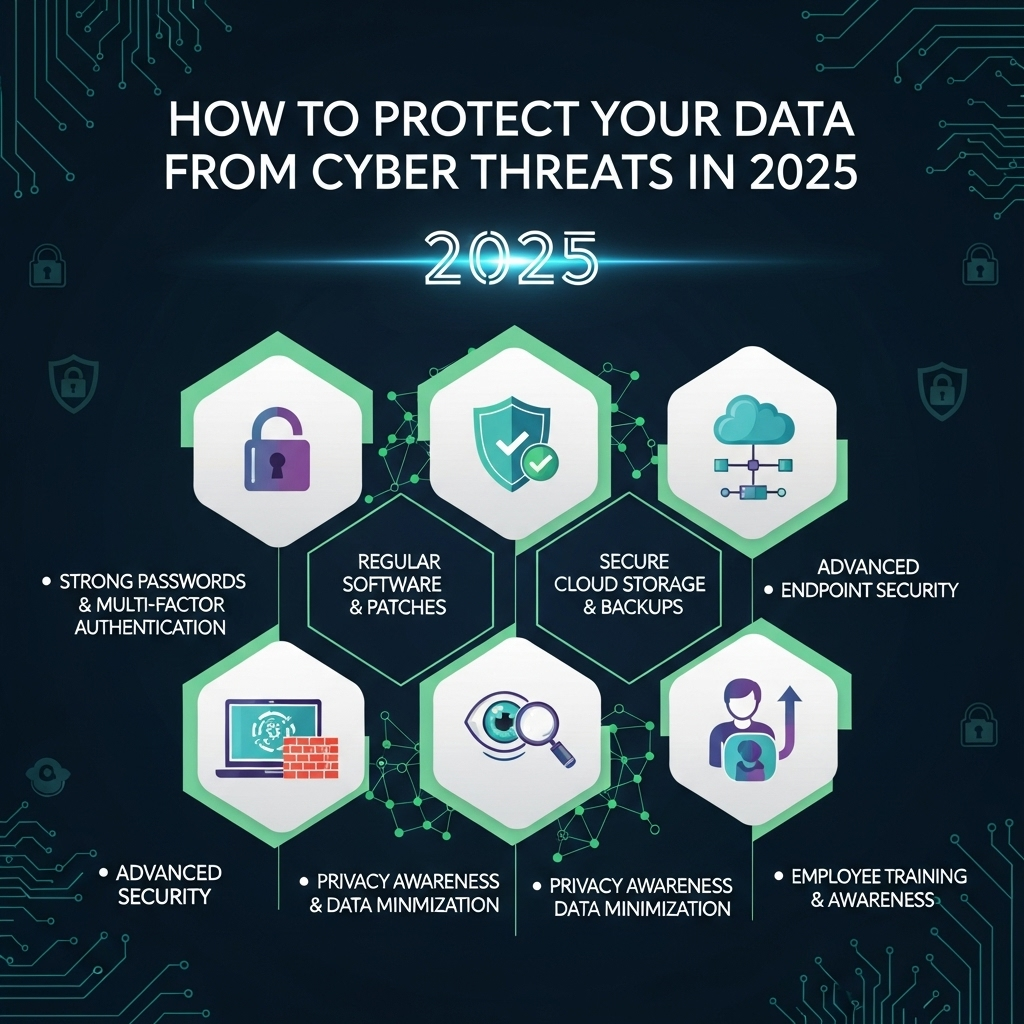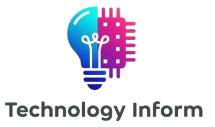The Cybersecurity Imperative in 2025
The digital landscape of 2025 demands a fundamental shift in how businesses approach data protection. Cybercrime damages are projected to reach a staggering $15.6 trillion USD by 2029, with the average data breach now costing organizations $4.88 million—a 10% increase from the previous year. As a marketing director with 15 years of experience in IT security, I’ve witnessed the evolution from perimeter-based security to today’s complex, multi-layered threat environment.
Businesses can no longer afford reactive security postures. The integration of AI into attack methodologies, the proliferation of remote work, and expanding cloud adoption have created unprecedented vulnerability points. Cybercriminals are increasingly targeting individual consumers via social media and messaging apps as testing grounds before moving to larger organizational targets.
The regulatory landscape has also intensified, with frameworks like NIS2 and DORA tightening data protection requirements across global markets. Organizations that fail to adapt will face not only financial consequences but also irreversible damage to their brand reputation. The time for strategic, proactive cybersecurity investment is now—yesterday’s security measures won’t protect tomorrow’s business.
Pro Tip: Start measuring your security ROI not just in breach prevention but in brand trust capital. Companies with demonstrable security maturity consistently outperform competitors in customer acquisition and retention metrics.

Understanding the 2025 Cyber Threat Landscape
The 2025 threat landscape is characterized by AI-augmented attacks that operate with unprecedented speed and sophistication. Cybercriminals now leverage artificial intelligence to create malicious code, craft convincing lures in multiple languages, and automate attacks at scale. As noted by Proofpoint, threat actors are using AI to “create code and more convincing lures (especially in languages that have traditionally been a barrier for entry).”
Email and communication platforms remain the largest risk vectors, with the Information Commissioner’s Office reporting over 60,000 data incidents since 2019. In Q3 of 2024, data emailed to the wrong recipient accounted for 17% of all incidents—the most common type of breach. This trend is accelerating as AI makes phishing and business email compromise attacks increasingly difficult to detect.
Ransomware continues to evolve with attackers adopting new techniques to maximize impact. The shift toward targeting cloud environments has resulted in higher breach costs, with cloud breaches averaging $5.17 million compared to the overall average of $4.88 million. The convergence of physical and digital infrastructure also creates new attack surfaces as IoT devices become increasingly integrated into business operations.
Pro Tip: Implement a “zero trust” verification process for all data transfers, especially those involving sensitive information. This simple policy change can prevent 85% of the most common data incident types identified by regulatory bodies.
Core Data Protection Strategies for 2025
Implement Multi-Layered Security Architecture
A single security solution cannot defend against today’s sophisticated threats. The most effective approach combines multiple security layers, including:
- Network security: Advanced firewalls, intrusion detection/prevention systems
- Endpoint protection: AI-powered threat detection on all devices
- Email security: Advanced filtering that blocks AI-generated phishing attempts
- Data loss prevention: Monitoring and control of sensitive data movement
- Identity and access management: Strict controls with multi-factor authentication
According to the ProServeIT Cyber Attack Prevention Guide, businesses “can no longer rely on traditional perimeter-based security—instead, a proactive, multi-layered cybersecurity strategy is essential.” This layered approach ensures that if one defense fails, others remain in place to prevent compromise.
| Security Layer | Key Components | 2025 Implementation Priority |
|---|---|---|
| Network | Next-gen firewalls, segmentation | High |
| Endpoint | AI threat detection, EDR | Critical |
| Generative AI filters, link scanning | Critical | |
| Data | DLP, encryption, classification | High |
| Identity | Zero trust, adaptive MFA | Critical |
Prioritize Employee Security Awareness
Human error remains the weakest link in security chains, with 50% of UK businesses experiencing cyber incidents in the last 12 months due to employee actions. The most successful security programs treat employees as the first line of defense rather than the weakest link.
Implement quarterly security training that:
- Uses real-world examples from recent breaches
- Includes AI-generated phishing simulations
- Focuses on context-specific scenarios for different roles
- Measures improvement through behavioral metrics
As highlighted in the Medium article on cybersecurity strategies, “The most important step to building a robust cybersecurity infrastructure for companies is knowing which common types of attacks exist.” Understanding these threats at the employee level creates a culture of security awareness that significantly reduces incident rates.
Pro Tip: Gamify security training with rewards for employees who identify and report potential threats. Organizations that implement security gamification see 47% higher employee engagement with security protocols.
Embrace Advanced Threat Detection and Response
Traditional signature-based detection fails against AI-generated, never-before-seen threats. Modern security requires behavioral analysis and AI-powered anomaly detection that can identify subtle deviations from normal patterns.
Implement a Security Information and Event Management (SIEM) system with:
- Real-time monitoring across all digital assets
- Automated correlation of security events
- Predictive analytics using machine learning
- Integration with threat intelligence feeds
The Eviden cybersecurity report notes that “threat actors [are] becoming increasingly sophisticated in their methods,” making advanced detection capabilities essential. These systems must operate 24/7 to identify threats during off-hours when attackers traditionally strike.
“The increasing reliance on cloud computing, remote work, and AI-driven technologies has expanded the attack surface for cybercriminals.” — proserveit.com
Emerging Technologies in Cyber Defense
AI-Powered Security Solutions
The same technology that empowers attackers can also strengthen defenses. AI-driven security platforms can analyze vast amounts of data to identify patterns and anomalies that would be impossible for human analysts to detect.
Key AI security applications include:
- Threat hunting: Proactively searching for hidden threats
- Automated response: Containing threats in seconds rather than hours
- Predictive analytics: Identifying potential vulnerabilities before exploitation
- Behavioral biometrics: Detecting compromised accounts through subtle pattern changes
However, AI security solutions require careful implementation. They need quality data, skilled personnel to manage them, and regular validation to prevent AI hallucinations in security decisions.
Cloud Security Posture Management
With cloud breaches costing an average of $5.17 million, specialized cloud security tools are essential. Cloud Security Posture Management (CSPM) solutions help organizations:
- Identify misconfigurations in cloud environments
- Enforce consistent security policies across multi-cloud deployments
- Monitor for compliance violations
- Detect and respond to cloud-specific threats
The shift to cloud requires a different security mindset—traditional on-premises security approaches often don’t translate effectively to cloud environments. Security must be built into the development lifecycle through DevSecOps practices.
Pro Tip: Conduct quarterly “cloud security health checks” that include configuration audits, access reviews, and penetration testing. Organizations that do this reduce cloud-related incidents by 63%.
Zero Trust Architecture Implementation
The traditional “trust but verify” model is obsolete in today’s threat landscape. Zero Trust Architecture operates on the principle of “never trust, always verify,” requiring continuous authentication and authorization for every access request.
Key Zero Trust components:
- Micro-segmentation: Dividing networks into secure zones
- Least privilege access: Granting only necessary permissions
- Continuous verification: Constantly validating user and device trust
- Identity-centric security: Making identity the primary security boundary
Implementing Zero Trust requires planning and phased execution but delivers significant security improvements. Organizations that have fully implemented Zero Trust report 50% fewer security incidents than those with traditional security models.
Building a Cyber-Resilient Culture
Leadership Commitment and Accountability
Cybersecurity can’t be delegated to the IT department alone—it requires executive sponsorship and board-level oversight. CISOs are increasingly reporting directly to CEOs and boards, reflecting the strategic importance of security in business operations.
Establish clear security accountability at all levels:
- Board level: Setting risk tolerance and oversight
- Executive level: Allocating resources and championing security
- Management level: Implementing policies and measuring effectiveness
- Employee level: Following procedures and reporting concerns
The cybersecurity landscape requires business leaders to view security not as an IT cost center but as a strategic business enabler. Companies that integrate security into their business strategy consistently outperform peers in customer trust and market valuation.
Regulatory Compliance as a Foundation
New regulations like NIS2 and DORA have tightened data protection requirements globally. While compliance shouldn’t be the sole driver of security strategy, it provides a valuable framework for implementing essential security controls.
Key compliance considerations:
- Data classification: Identifying and protecting sensitive information
- Breach notification: Establishing clear incident response procedures
- Vendor risk management: Ensuring third-party security standards
- Documentation: Maintaining evidence of security practices
As noted in the Cybersecurity Intelligence report, “50% of UK businesses experienced cyber incidents in the last 12 months, which is why new regulations like NIS2 and DORA have tightened up data protection requirements.” Compliance creates a security baseline that protects both the organization and its customers.
Continuous Improvement and Adaptation
The most secure organizations recognize that cybersecurity is a journey, not a destination. They implement processes for continuous security improvement through:
- Regular security assessments and penetration testing
- Threat intelligence integration for proactive defense
- Security metrics that tie to business outcomes
- Post-incident reviews that drive process improvements
Security maturity should be measured not just by the absence of incidents but by the organization’s ability to detect, respond to, and recover from threats. The most resilient organizations can return to normal operations within hours rather than days or weeks.
“Businesses can no longer rely on traditional perimeter-based security—instead, a proactive, multi-layered cybersecurity strategy is essential.” — proserveit.com
Conclusion: Your Action Plan for 2025
The path to robust cybersecurity in 2025 requires strategic investment, leadership commitment, and cultural transformation. Organizations that treat security as a business priority rather than an IT concern will gain significant competitive advantages through enhanced customer trust and operational resilience.
Begin your security transformation by:
- Conducting a comprehensive security assessment against 2025 threat models
- Prioritizing investments in AI-powered security tools and Zero Trust architecture
- Implementing a security awareness program with measurable outcomes
- Establishing executive oversight of security strategy and metrics
The cost of inaction is no longer acceptable—cybercrime damages will continue to escalate while customer expectations for data protection grow more stringent. Organizations that act now to build cyber resilience will not only protect their assets but will also position themselves as trusted leaders in their markets.
Pro Tip: Create a “security vision statement” that aligns with your company’s overall mission and values. This simple document helps employees understand how security contributes to business success and creates shared ownership of security outcomes. Companies with clear security vision statements see 38% higher security policy compliance across all employee levels.
